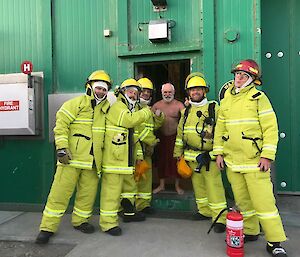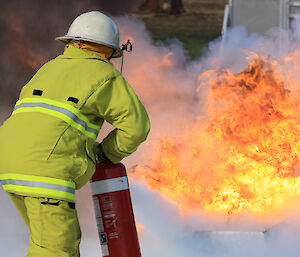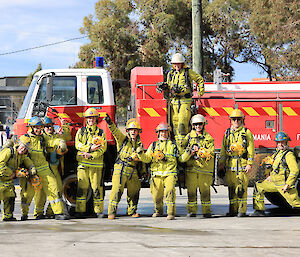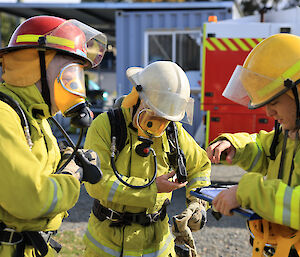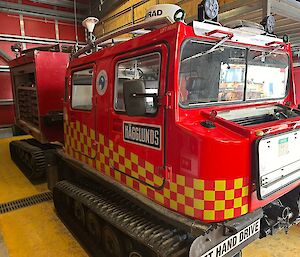With re-supply now over Davis station has moved swiftly into what is referred to as Field Operations Recess. The recess mode enables station personnel to undertake training and to check our safety systems are fully operational and working well. Electrical systems, heating, safety systems, alarms, and rescue vehicles are all checked and double-checked as our new fire and Search and Rescue teams undertake inspections and drills.
One such drill is the fire drill and muster. This involves all personnel responding to a fire alarm by gathering at our muster point with survival bags, ready to be checked off a muster list. While this is happening, our new fire team gather their fire-fighting equipment and ready themselves to respond to the fire itself. This process is planned in a methodical way over two days and culminates with the sound of our fire alarm planned for 4.30 pm on the final day.
You can imagine our surprise then as we were awoken to the sound of an unplanned fire alarm at midnight the night before! Bleary eyed and clutching survival bags our entire station community stumbled down stairs, through corridors and across snow-covered grounds to assemble at our muster point. Turns out that our fire alarm was triggered by a late-night visitor to the Sauna.
To the relief of all, it was in fact a false alarm, set off in the Sauna room! The fire drill itself however was an outstanding success with all accounted for, with some more appropriately attired than others.
One of the biggest safety concerns on station is the potential for fire and for this reason the station has three fire crews with six expeditioners per crew. These crews are led by our fire chief and our two fire captains who will be spending a considerable amount of time over this coming year planning the training for our 18 fire team members.
All winter expeditioners undertake a one-week training program with the Tasmania Fire Service before leaving to go south.
The program has been designed specifically for our needs for living and working in the Antarctic. During the week we undertake simulations and scenarios based on actual events that have taken place in the Antarctic using the same firefighting equipment as that supplied on station.
The overalls, boots, gloves and helmets, extinguishers and breathing apparatus (or BA’s as they are often referred to), are the same as those we use on station. The only major difference in equipment are the fire trucks. A normal fire truck such as the one in the picture below would simply not function in Antarctic.
Instead, we use especially designed over-snow vehicles called Hägglunds. Our fire Hägg as we call it is fitted out in the same way as a truck but it looks way cooler! And it has a dazzling top speed of 15 km per hour! It carries water just like a regular truck, hoses and the rest of the fire fighting hardware which is all kept in the back section.
Besides giving us the skills we need to respond to a fire, the training has also galvanised us into a solid team, building our confidence in one another. And that’s exactly how it felt that night when the fire alarm sounded for real! As we gathered in the Mess area, waiting for news it was comforting to know our fire team was confident in their systems, training and one another.
Thank you to all involved!
Brett Barlee
Station Leader



